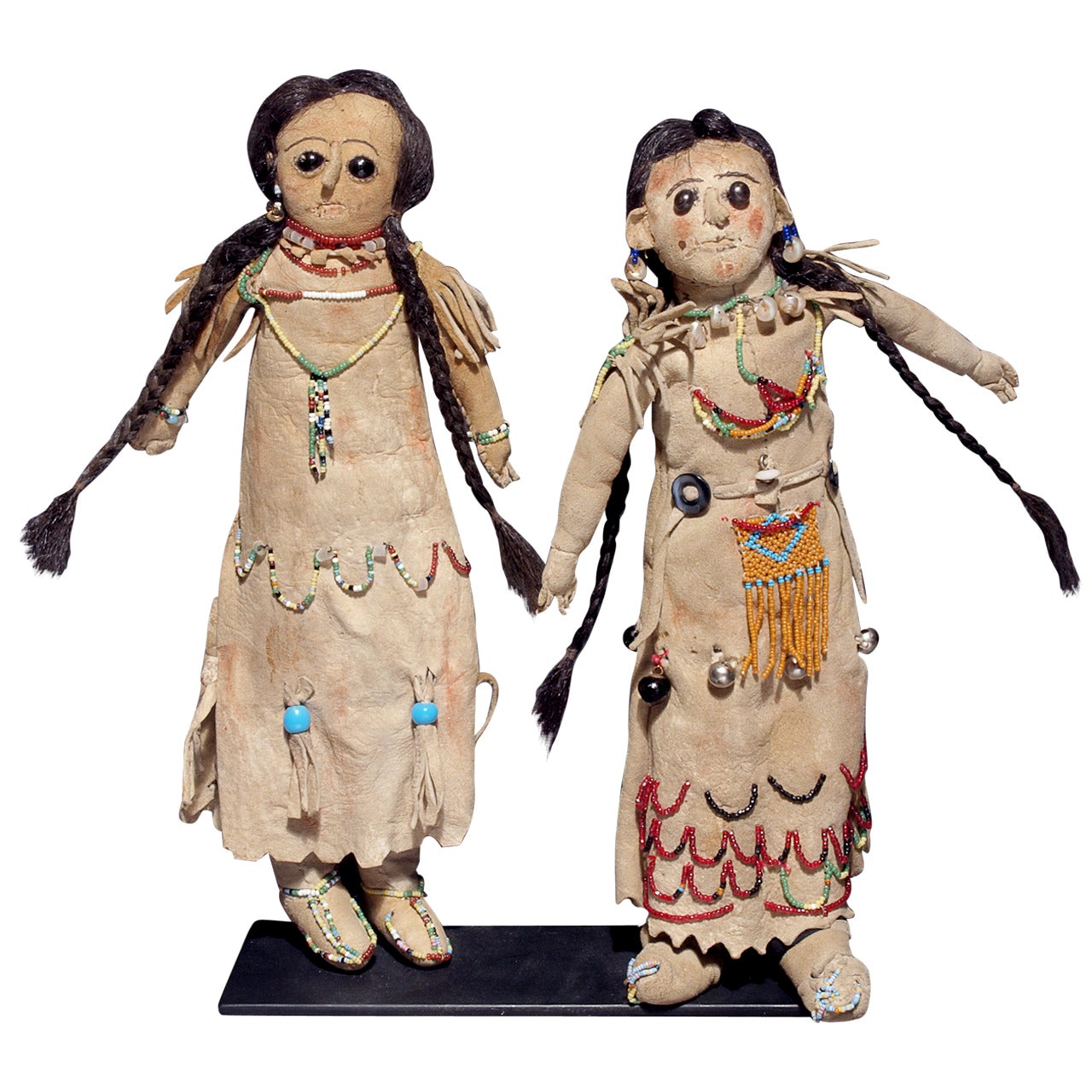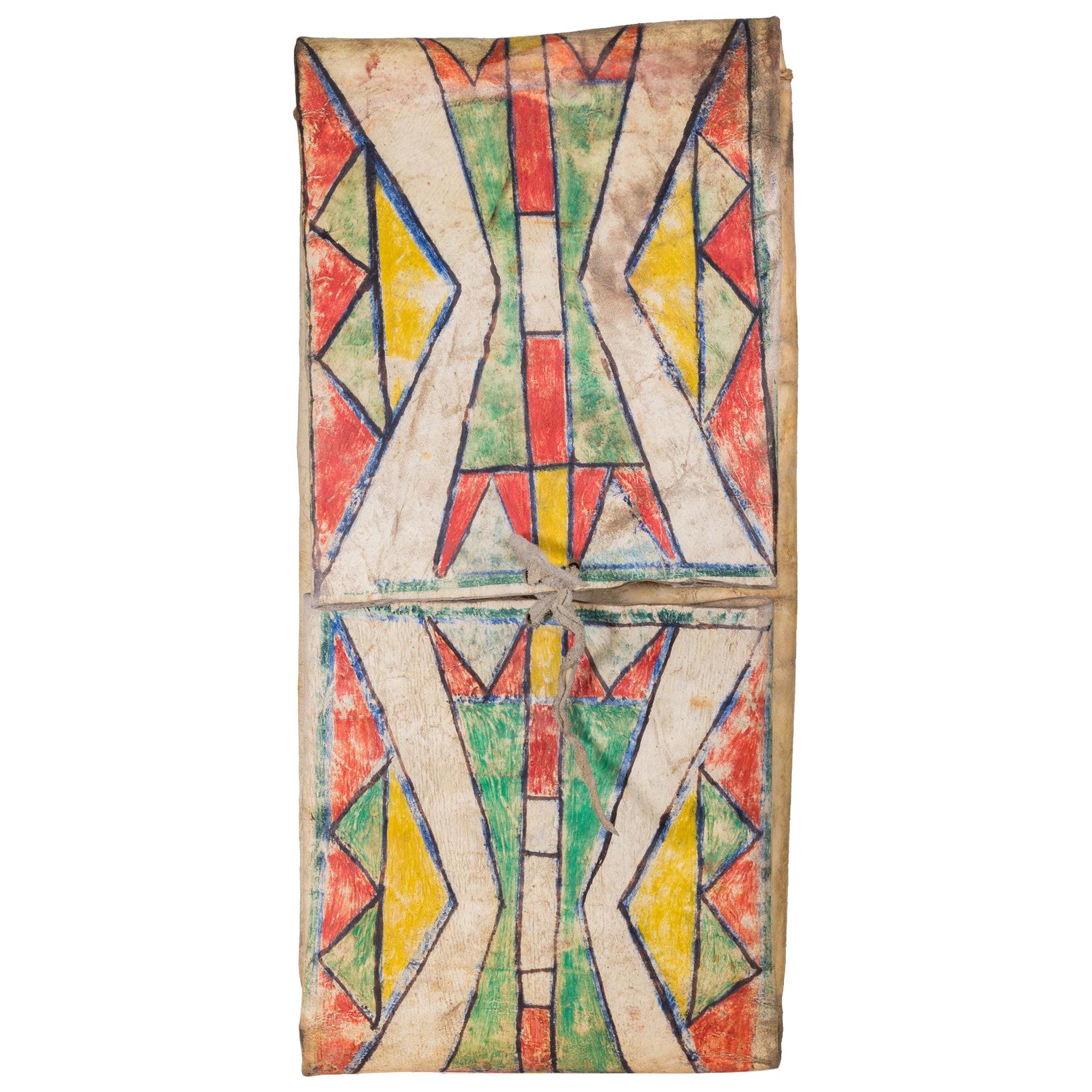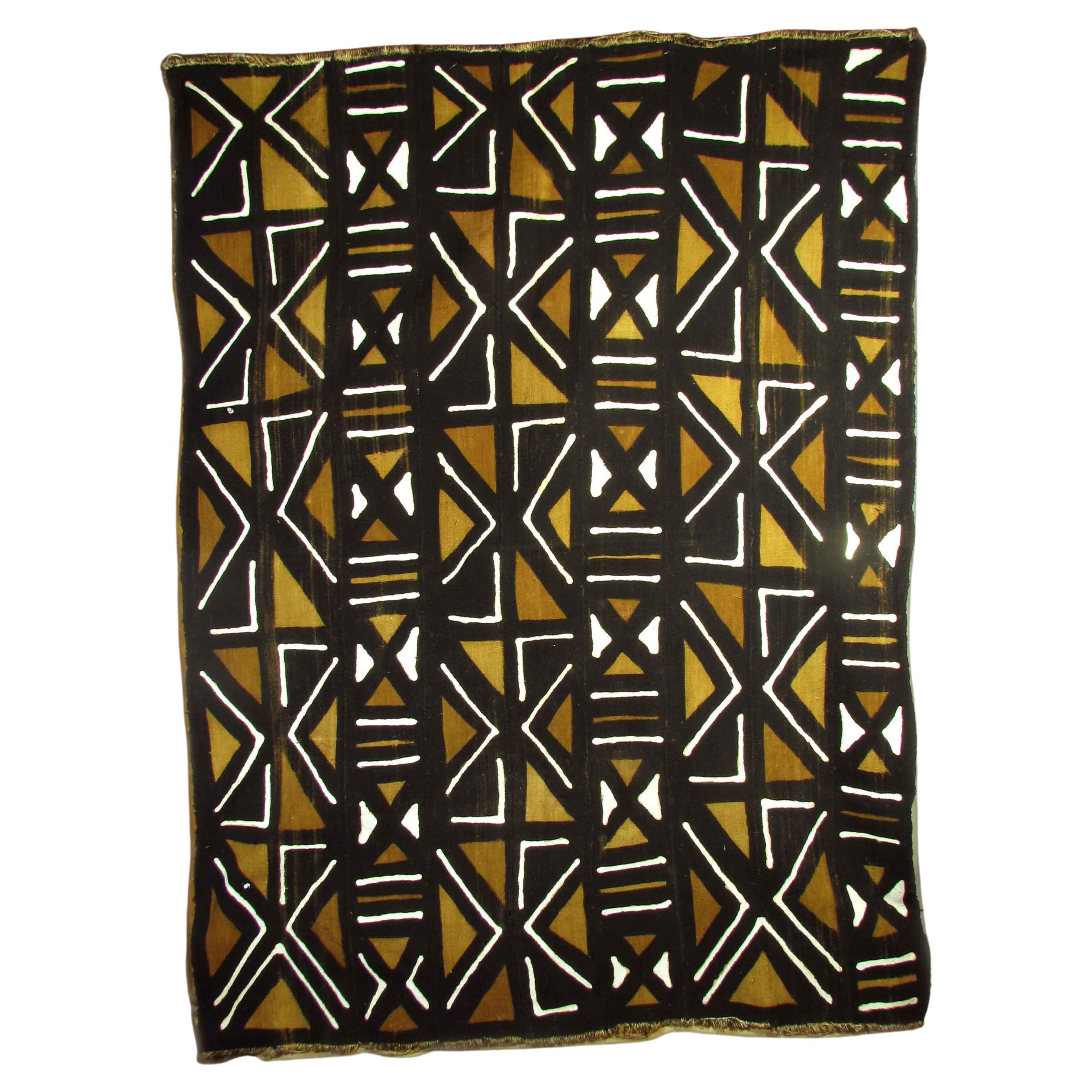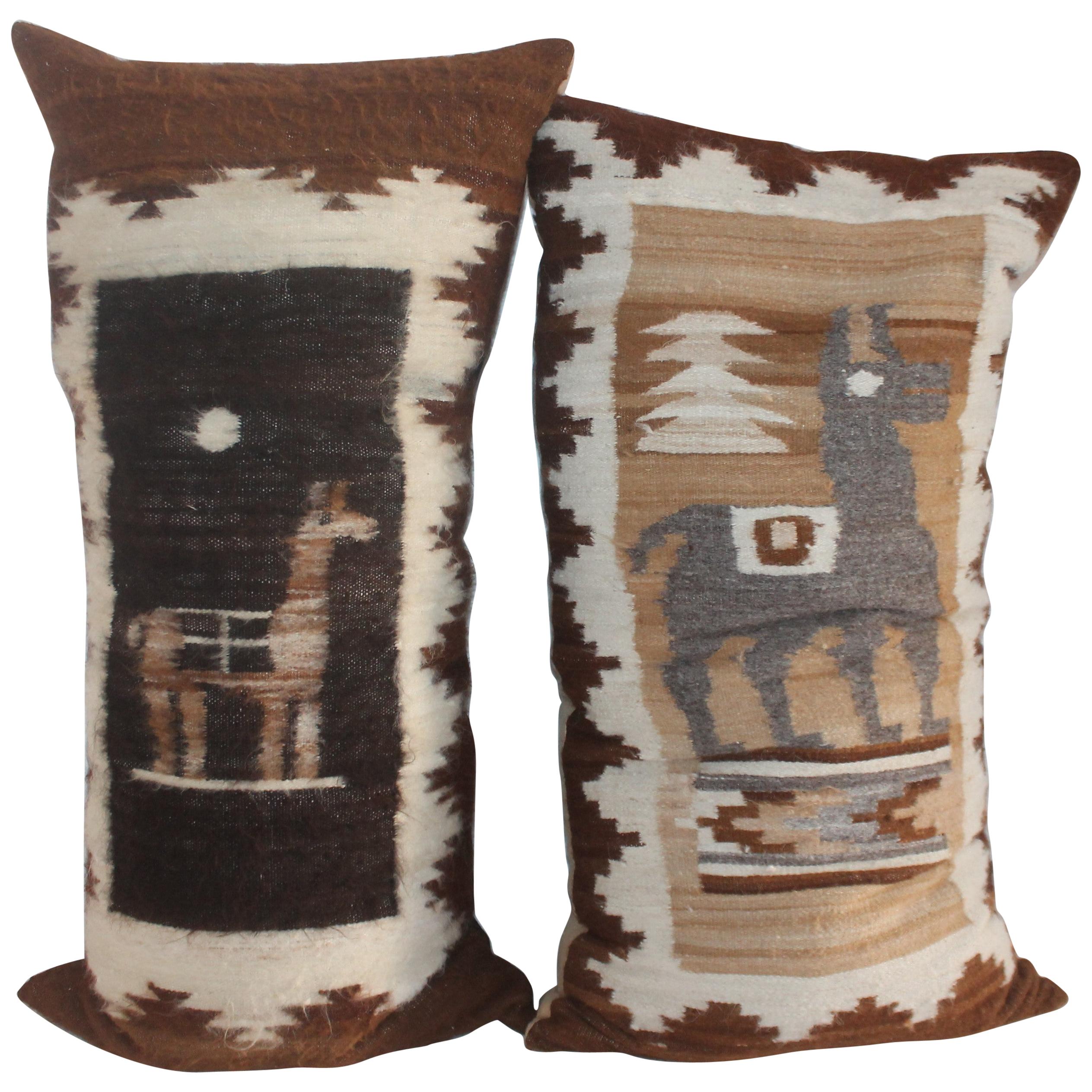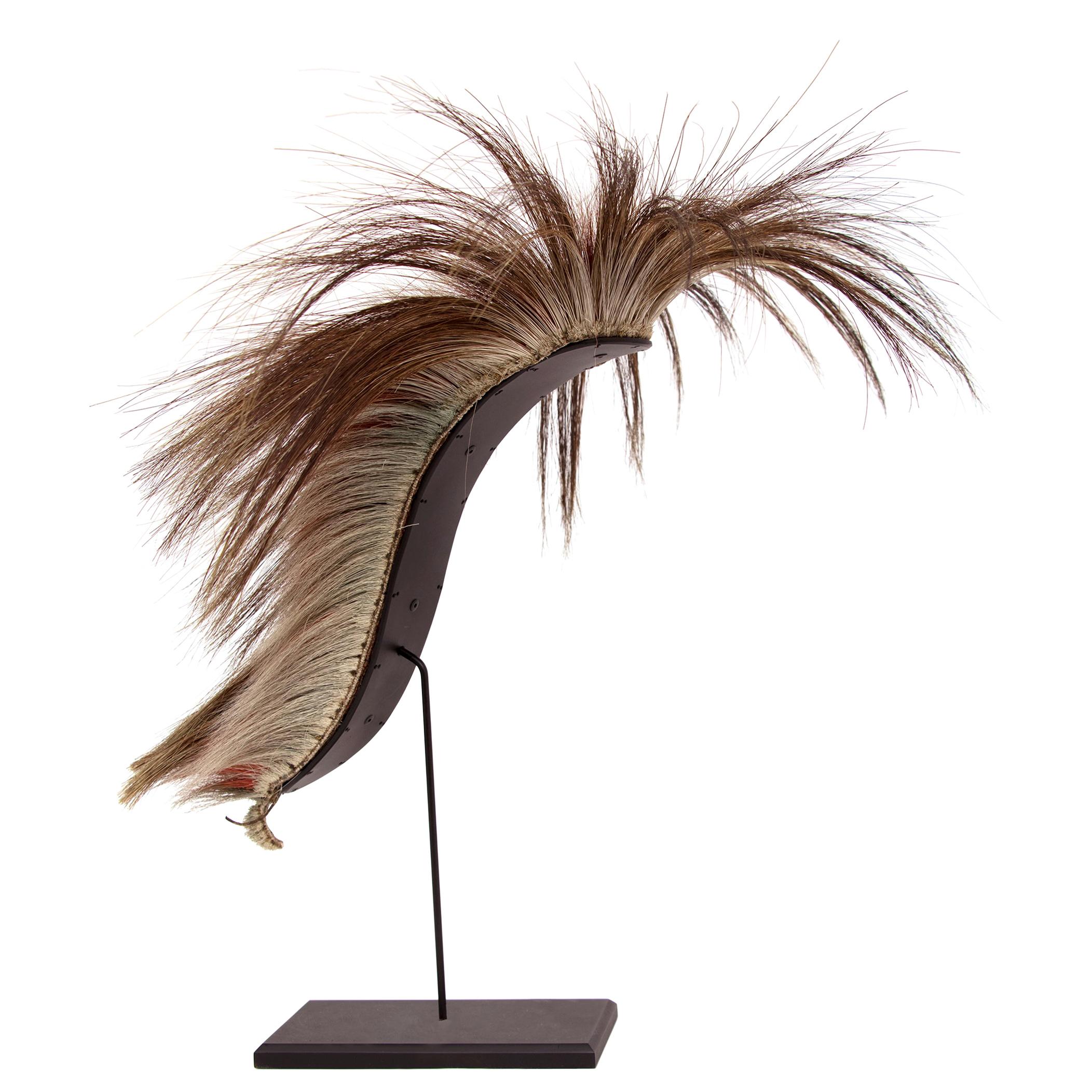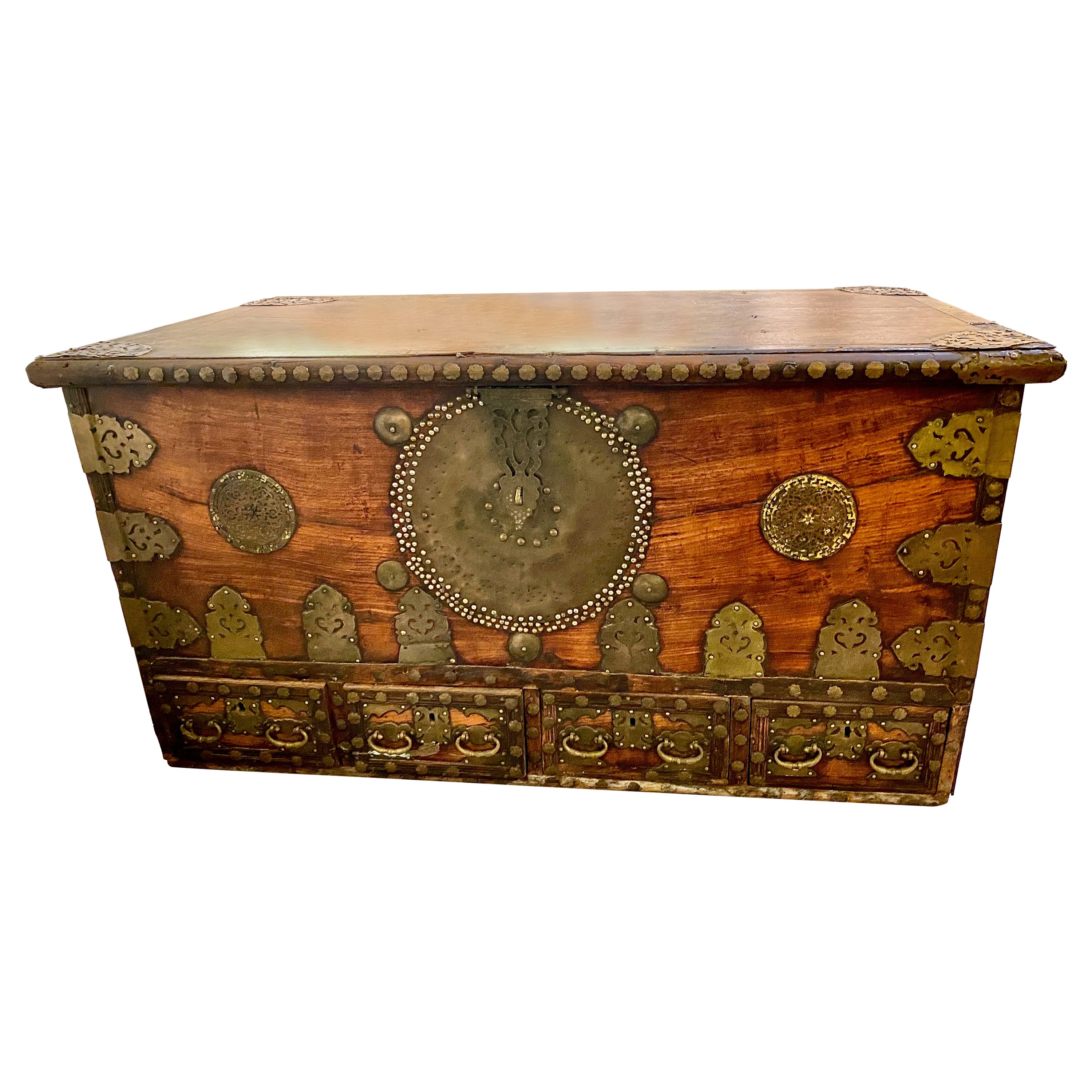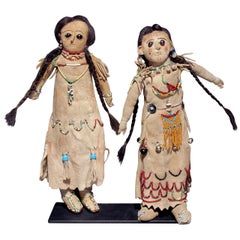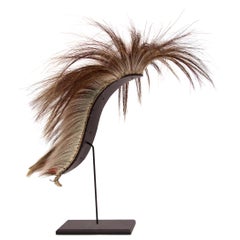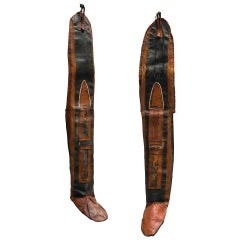
Rare Matching Pair of Parfleche Envelopes, Cheyenne, 19th Century
View Similar Items
Want more images or videos?
Request additional images or videos from the seller
1 of 3
Rare Matching Pair of Parfleche Envelopes, Cheyenne, 19th Century
About the Item
- Dimensions:Height: 28.5 in (72.39 cm)Width: 15 in (38.1 cm)Depth: 3.5 in (8.89 cm)
- Sold As:Set of 2
- Style:Native American (Of the Period)
- Place of Origin:
- Period:
- Date of Manufacture:circa 1885
- Condition:Wear consistent with age and use.
- Seller Location:Denver, CO
- Reference Number:Seller: 180641stDibs: LU10046956388
About the Seller
5.0
Recognized Seller
These prestigious sellers are industry leaders and represent the highest echelon for item quality and design.
Established in 1979
1stDibs seller since 2013
143 sales on 1stDibs
Typical response time: 5 hours
More From This SellerView All
- Pair of Antique Native American Dolls, Athapaskan, Alaska, 19th CenturyBy Native American ArtLocated in Denver, COCreated in the late 19th century, these authentic Northwest Coast Native American Indian dolls are depicted wearing traditional Athapas...Category
Antique 19th Century American Native American Tribal Art
MaterialsHide
- Roach Headdress, Antique Native American, Plains Indian, 19th CenturyBy Native American ArtLocated in Denver, COAntique 19th century Native American (Plains Indian) roach headdress made with dyed deer hair and porcupine guard hair on a u-shaped braided cloth with...Category
Antique 19th Century American Native American Native American Objects
MaterialsFur
- Native American Parfleche Box, Sioux, 19th Century Painted Hide PlainsBy Sioux Indian ArtLocated in Denver, COAntique Sioux (Native American/Plains Indian) Parfleche in a box form constructed of rawhide and intricately painted in an abstract design with hourglass and geometric motifs with natural pigments and red trade cloth. At the time this was created, the Sioux Indians were nomadic and are associated with vast areas of the Great Plains of the United States including present-day North and South Dakota, Minnesota, Nebraska and Montana. Authenticity is guaranteed. Box is in very good condition - please contact us for a detailed condition report. Parfleches are rawhide containers which were fundamental to the Plains way of life. Functioning essentially as protective travelling suitcases, they enabled the nomadic tribes to effectively pursue buffalo herds and migrate between seasonal camps. So critical were they to a nomadic existence that over 40 tribes are known to have historically produced parfleches. Collectively, these tribes inhabited an area which encompassed the entirety of the Plains, as well as the parts of the Southwest, the Transmontane and Western Plateau regions. Parfleches were, out of necessity, robust and versatile objects. They were designed to carry and protect within them anything from medicinal bundles to seasonal clothing or food. In fact, it was because of the containers’ robusticity and variety that parfleches earned their name in the Anglo world. Derived from parer (to parry or turn aside) and fleche (arrow), the word parfleche was coined by 17th century French Canadian voyageurs and used to describe indigenous objects made from rawhide. Despite their common utilitarian function, parfleches served as one of the major mediums through which Plains Indian tribes could develop their long-standing tradition of painting. In fact, it is in large part due to the parfleche that tribal style emerged. Even though parfleche painting developed simultaneously with beading and weaving, painting as an artistic tradition held particular importance in tribal culture. Believed to have evolved from tattooing, it had always been used as a conduit through which tribal and individual identity could be expressed. As such, many tribeswomen were deeply committed, some even religiously, to decorating their parfleche either with incised or painted motifs that were significant to them and/or the tribe. For some tribes, such as the Cheyenne, the decorative processes which surrounded parfleche production were sacred. For others, it seems that their parfleche designs shared an interesting artistic dialogue with their beadwork, indicating a more casual exchange of design motifs. This particular relationship can be seen in Crow parfleche...Category
Antique Late 19th Century American Native American Native American Objects
MaterialsHide
- Very Early Pair of Beaded Moccasins, Prairie "Woodlands", circa 1850By Native American ArtLocated in Denver, COA rare early pair of Classic Period (Pre-Reservation era) soft-soled moccasins. Constructed of native tanned hide and exquisitely beaded with trade beads. The cuffs are adorned in ri...Category
Antique 19th Century American Native American Native American Objects
MaterialsHide
- Antique Native American Kachina Doll, "HeHeya Clown, " Hopi, Early 20th CenturyBy Native American ArtLocated in Denver, COHopi HeHeya Clown carrying a watermelon and backpack from the 1st quarter of the 20th century. Made of wood with pigments, dimensions measure 11 ½ x 3 ½ x 3 ¾ inches. The Heheya K...Category
Early 20th Century American Native American Native American Objects
MaterialsWood
- 1870s Transitional Plateau Rawhide Parfleche Envelope with Geometric PatternsBy Plateau IndiansLocated in Denver, COA parfleche container in an envelope form, finely painted in an abstract design. Makes a stunning wall hanging alone or in a grouping with other parfleche or can be placed on a shelf or Stand. This was created by a North American Indian living in the Plateau cultural area - encompassing portions of what is now northern Idaho, western Montana, northeast and central Oregon, eastern Washington and southeast British Columbia. The tribes from this region include Kalispel, Flathead, Kutenai, Palus, Coeur D'Alene and Nez Perce. Parfleches are rawhide containers which were fundamental to the Plains way of life. Functioning essentially as protective travelling suitcases, they enabled the nomadic tribes to effectively pursue buffalo herds and migrate between seasonal camps. So critical were they to a nomadic existence that over 40 tribes are known to have historically produced parfleches. Collectively, these tribes inhabited an area which encompassed the entirety of the Plains, as well as the parts of the Southwest, the Transmontane and Western Plateau regions. Parfleches were, out of necessity, robust and versatile objects. They were designed to carry and protect within them anything from medicinal bundles to seasonal clothing or food. In fact, it was because of the containers’ robusticity and variety that parfleches earned their name in the Anglo world. Derived from parer (to parry or turn aside) and fleche (arrow), the word parfleche was coined by 17th century French Canadian voyageurs and used to describe indigenous objects made from rawhide. Despite their common utilitarian function, parfleches served as one of the major mediums through which Plains Indian tribes could develop their long-standing tradition of painting. In fact, it is in large part due to the parfleche that tribal style emerged. Even though parfleche painting developed simultaneously with beading and weaving, painting as an artistic tradition held particular importance in tribal culture. Believed to have evolved from tattooing, it had always been used as a conduit through which tribal and individual identity could be expressed. As such, many tribeswomen were deeply committed, some even religiously, to decorating their parfleche either with incised or painted motifs that were significant to them and/or the tribe. For some tribes, such as the Cheyenne, the decorative processes which surrounded parfleche production were sacred. For others, it seems that their parfleche designs shared an interesting artistic dialogue with their beadwork, indicating a more casual exchange of design motifs. This particular relationship can be seen in Crow parfleche...Category
Antique Late 19th Century North American Native American Native American...
MaterialsHide
You May Also Like
- 19th Century Berber ScarfLocated in Brecht, BEA very rare find this mid 19th century unique berber scarf, sublime natural dye colors.Category
Antique Mid-19th Century Moroccan Tribal Art
MaterialsWool
- Rare Tuareg Nomadic BootsLocated in Antwerp, BETuareg nomadic people leather boots.Category
Antique 19th Century Nigerien Folk Art Tribal Art
MaterialsLeather
$1,319 / set - Yoruba (Nigeria) Early 20th Century ClothLocated in Greenwich, CTFine early 20th Century hand spun indigo cotton and Trans-Sahara silk cloth.Category
Early 20th Century Nigerian Tribal Quilts and Blankets
MaterialsCotton, Silk
- 19th Century Plateau ParflecheBy Plateau IndiansLocated in Coeur d'Alene, IDPlateau parfleche of steer or elk hide, gun barrel scraper used. Ex. LaPlant collection. Period: Last quarter 19th century Origin: Plateau Size: 12" x 24". Family Owned & Ope...Category
Antique Late 19th Century American Native American Native American Objects
MaterialsOther
- Mud Cloth 'Bogolanfini', Mali, Bamana People, Mid-20th CenturyLocated in Ottawa, OntarioA mud cloth (Bogolanfini), Mali, Bamana People mid-20th century. Hand woven 'discharge dyed' cotton Approximately 71 x 52 in. (180cm. x 132cm.) A dazzling geometric pattern...Category
Mid-20th Century Malian Tribal Tribal Art
MaterialsFabric
- Peruvian Hand Woven Weaving Pillows / PairLocated in Los Angeles, CAThese two hand woven lambs wool pillows have camels on the front and cotton backings. They are booth different patterns and colors. Measures: 19 x 36 x 9 large pillow 1...Category
20th Century American Country Pillows and Throws
MaterialsWool
$875 Sale Price / set26% Off
Recently Viewed
View AllMore Ways To Browse
Antique Furniture Kansas
Southwest Folk Art
Crow Indian Art
Western Lodge
Antique Travel Suitcase
Large French Pair Decorative Painting
Beadwork Native American
Antique Food Containers
Canadian Indian Art
Modern Indian Clothing
Antique Furniture Chicago Il
American Indian Beadwork
Indian Tribes Of North America
Antique Tattoo
Antique Furniture Chicago Area
Antique Furniture Kansas City
Used Clothing Bundles
Antique Indian Clothing

